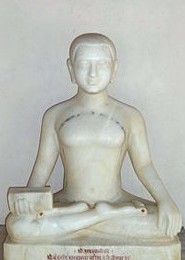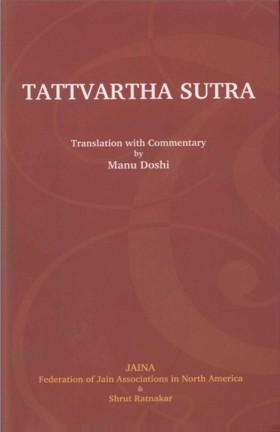06.08 Adhikaranam Jeevājeevāh
Audio: Sanskrit: अधिकरणं जीवाजीवा: ।
Hindi: अधिकरण जीव और अजीवरूप है।
06.09 Ādyam Sanrambhasamarambhārambhyogkrtkāritān-umatkashāyvisheshaistristristrishchatushchaīkashah
Audio: Sanskrit: आद्यं संरम्भसमारम्भारम्भयोगकृतकारितानुमतकषायविशेषैेस्त्रिस्त्रिस्त्रिश्चतुश्चैकशः ।
Hindi: आद्य अर्थात् जीव-अधिकरण क्रमशः संरम्भ, समारम्भ, आरम्भ के रूप में तीन प्रकार का, योग रुप में तीन प्रकार का, कृत कारित, अनुमत के रूप में तीन प्रकार का और कषाय के रूप में चार प्रकार का है।
06.10 Nivartananikshepsanyognisargā Dwichaturd-witribhedāh Param
Audio: Sanskrit: निर्वर्तनानिक्षेपसंयोगनिसर्गा द्विचतुर्द्वित्रिभेदाः परम् ।
Hindi: पर अर्थात् अजीवाधिकरण निर्वर्त्तना, निक्षेप, सयोग और निसर्ग के अनुक्रम से दो, चार, दो और तीन भेदरूप है।
06.08-10
English: These sutras deal with the factors that cause Sāmparāyik Asrav. The interaction of soul with insentient matter is the basic requirement for undertaking an activity. The various sentient and insentient forces involved in an activity are termed as the means thereof.
The sentient involvement can be of 108 types. For instance, every activity involves three stages. Before undertaking an activity, one conceives of the idea. That is the first stage called Sarambh. After conceiving of the activity one would make necessary arrangements for the purpose. That is the second stage known as Samārambh. Thereafter one becomes actually involved īn that activity. That is the third stage known as Ārambh. īn all of these three stages, body, speech and mind are involved. As such, the activity can be said as being undertaken in nine ways. These ways can be resorted to by oneself or through someone else or by encouraging someone else to do it. Multiplying those nine ways by these three modes works out to 27 ways. Since the Sāmparāyik activities can be undertaken with the sense of anger, arrogance, deceit and greed, those 27 ways stand to be multiplied by those four modes. That works out to 108 ways of sentient involvement.
Insentient involvement can be of four types. The first is Nivartan, which denotes the use of tangible means. Two types of such means can be involved in an activity. One is the body, which is invariably involved in any activity. Since there are five types of bodies as mentioned in chapter 2, such involvement is considered of those five types. The other pertains to the means, which are used for the purpose. For instance, a person getting angry may use a stick for giving vent to his anger; or one intending to produce something may use a machine or other device. The stick, the machine and the device constitute the means in such cases. There can thus be innumerable means for undertaking activities.
The remaining three types of insentient involvement mainly relate to monastic cadre. One is called Nikshep, which pertains to placing or replacing of any object. The careless or improper handling of any object would result in Asrav. The second is Sanyog, which pertains to mixing of food, drinks etc. For instance, mixing of foods in order to make it more tasteful would result in Asrav. The third is Nisarga, which pertains to unduly exercising of mind, speech and body. That also results in Asrav.
 Acharya Umaswati
Acharya Umaswati
